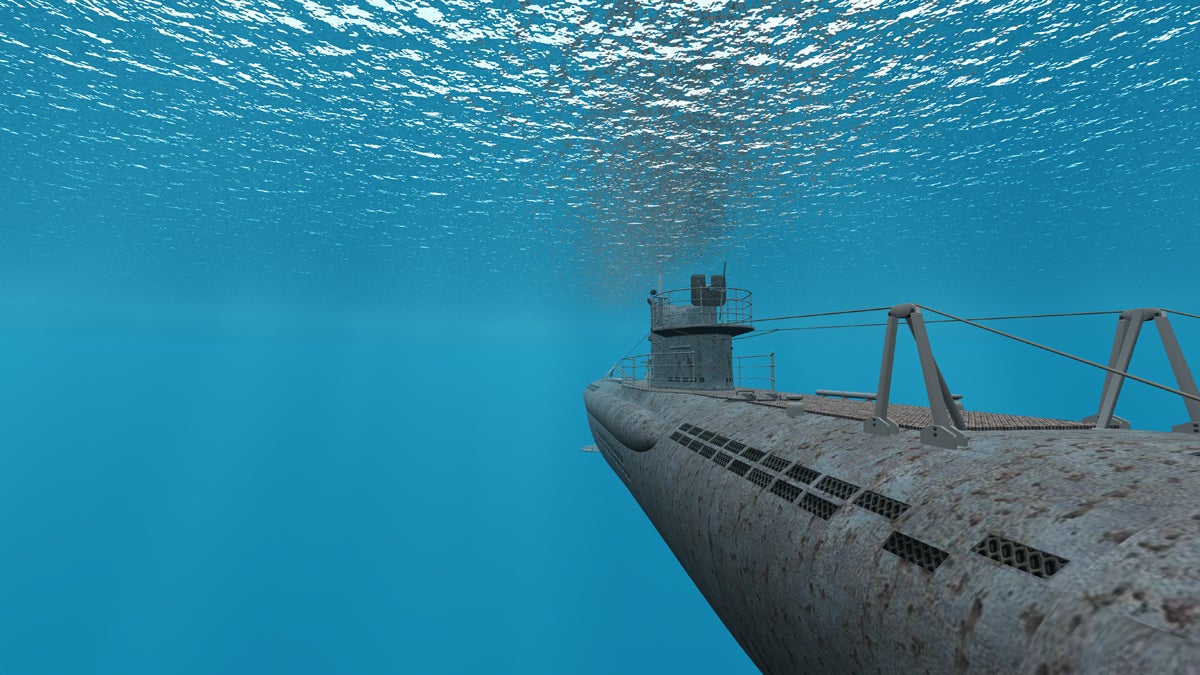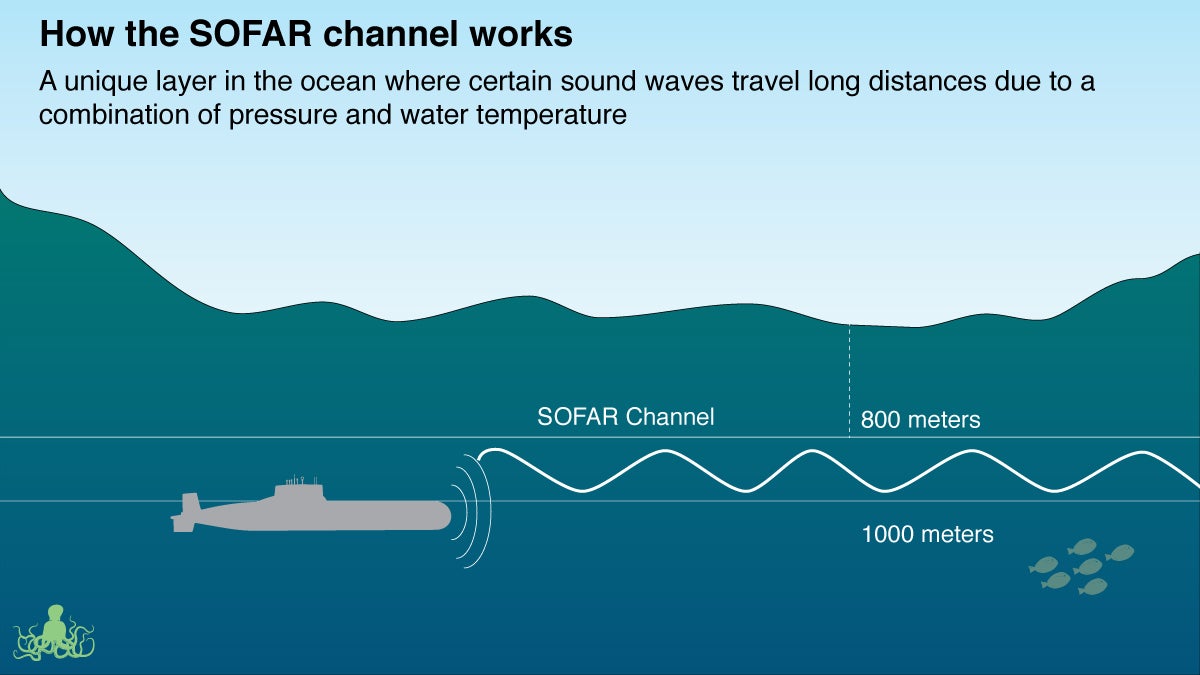Long distance listening: A special layer of ocean makes eavesdropping easier
Listen
(Shutterstock Image)
How a layer of the Earth’s oceans unlock acoustic mysteries.
Maurice Ewing and a team of American scientists set off from Woods Hole, on Cape Cod, aboard the R/V Saluda to test a theory about underwater sound. It was 1944, and the native Texan believed there may be a layer in the ocean where a combination of pressure and temperature create a narrow channel where certain low-frequency sounds would travel long distances.
In the deep waters of the Atlantic, researches dropped several explosives containing four pounds of dynamite, each timed to detonate at a different depth. Using an underwater microphone called a hydrophone, a second boat stationed 900 miles away successfully detected the sounds.
Subsequent tests picked up the signal at a distance of 3,000 miles.
The discovery of the SOFAR sound channel opened up a new way to study the world’s oceans, as well as a unique tool in the nation’s defense.
 (Graphic by Rachel Feierman)
(Graphic by Rachel Feierman)
Sound Logic
The SOFAR channel stands for the Sound Fixing And Ranging Channel, and according to Peter Worcester at the Scripps Institution of Oceanography, it’s a result of how the speed of sound varies with depth in the ocean.
“As you go close to the surface of the ocean, it becomes much warmer, and as a result, the speed at which sound travels increases,” he says.
Continue deeper into the ocean and the temperature eventually becomes constant. However, the pressure continues to increase, and like in the warmer waters near the surface, the speed at which sound waves travel increases.
The result is two bands of water where sound moves relatively faster than the “sound speed minimum,” which falls in the middle, at a depth of 800-1,000 meters in the mid-latitude zones of the world’s oceans.
Crucially, when low-frequency waves pass through this channel (they must arrive from the correct angle), they seem to get stuck there, ping-ponging off the warmer water above and higher pressure water just below.
“And what this does, is it means that the sound doesn’t interact with the surface or the seafloor,” says Worcester. “So it can travel long distances before it is absorbed by the processes in the ocean that reduce sound.”
With nothing in the way to sap their energy, the waves just keep fanning out.
This above recording is sound from an iceberg (named A53a) running aground off Antarctica. The hydrophone is placed 150 miles away.
Just as Ewing was documenting the SOFAR channel, a team of Soviet scientists made a near simultaneous breakthrough. This wasn’t exactly an era of broad sharing between the two nations, according to Worcester.
“These two groups didn’t realize they found the same phenomena until many years later when one could actually talk about such things,” he says.
For the Americans, the immediate thought was not its scientific significance, but rather how could the SOFAR channel be used to help win World War II.
The military’s first idea was a bold one: to load American fighter planes with a small explosive that could be used as a homing mechanism in case they were shot down over water.
“The notion was that the fliers would drop these devices,” he says. “They would make a sound and then there would be hydrophones scattered around the ocean basin that would record these sounds.”
By triangulating the signal, rescue vessels could then pluck downed airmen from their life rafts.
But the war was over within a year, and the system isn’t believed to have ever been put into action. Ever vigilant, though, the military soon saw new promise in the SOFAR.
“One of the first thoughts during the early part of the Cold War was how would one track Soviet submarines.”
The U.S. Navy, with the help of Bell Labs, began work on a secret operation dubbed Project Jezebel, placing hydrophones around the North Atlantic. They were looking for the low rumbles of diesel Soviet subs that would serve as warning of an enemy on the move. In time, a vast underwater surveillance system called SOSUS (Sound Surveillance System) was in place.
But in the early days, it didn’t always work as intended.
“The sailors manning the systems would record these low frequency sounds at about 18 Hz, and they had absolutely no idea what they were. And at least the story I heard is that they referred to these sounds as coming from the Jezebel Monster.”
Listening In
Worcester says today, we know the strange calls were coming from fin and blue whales, who both vocalize at that frequency.
And the SOFAR listening system did wind up tracking more than chatty whales. It successfully detected a Soviet sub during the Cuban Missile Crisis and remained in use right up through the end of the Cold War.
Today there’s still hydrophones dotting the world’s oceans. Researchers like Worcester use them to study ocean temperature and current, as well as the impact of freighter traffic on marine life.
They’re also important for mapping seismic activity.
An underwater earthquake heard 300 miles away in the eastern Pacific.
Instead of eavesdropping on the Soviets, scientists are now tuning their ears to other sounds filling up the world’s oceans, and utilizing the SOFAR’s megaphone to do it from long distances.
WHYY is your source for fact-based, in-depth journalism and information. As a nonprofit organization, we rely on financial support from readers like you. Please give today.



